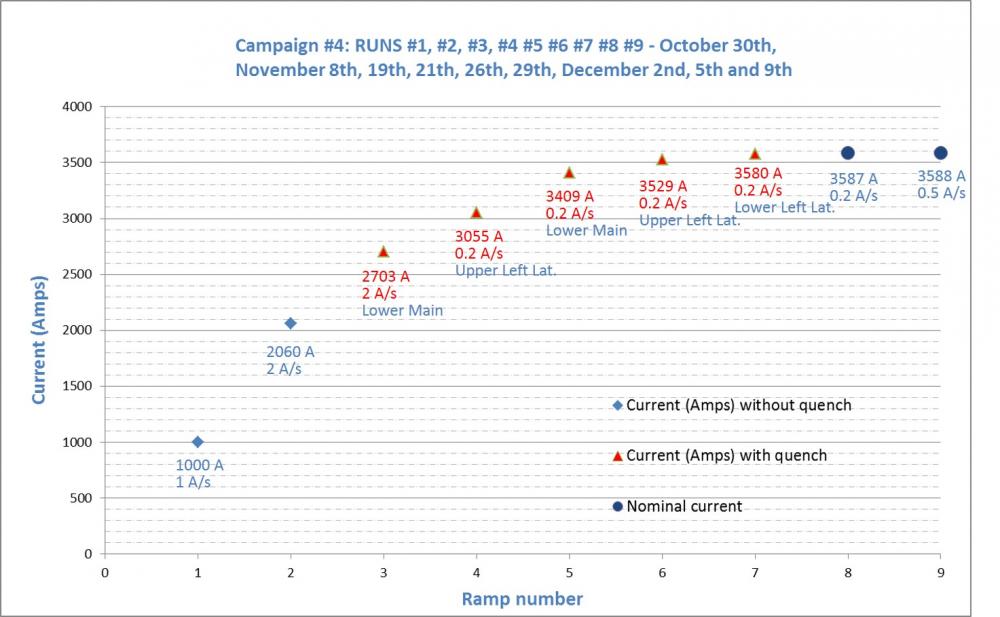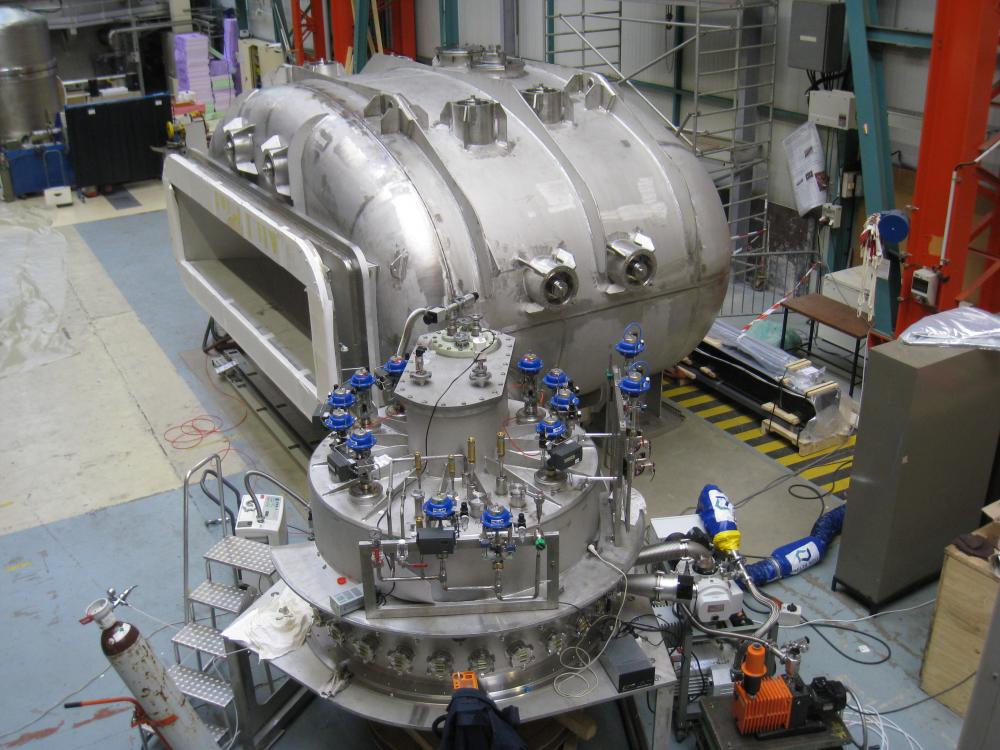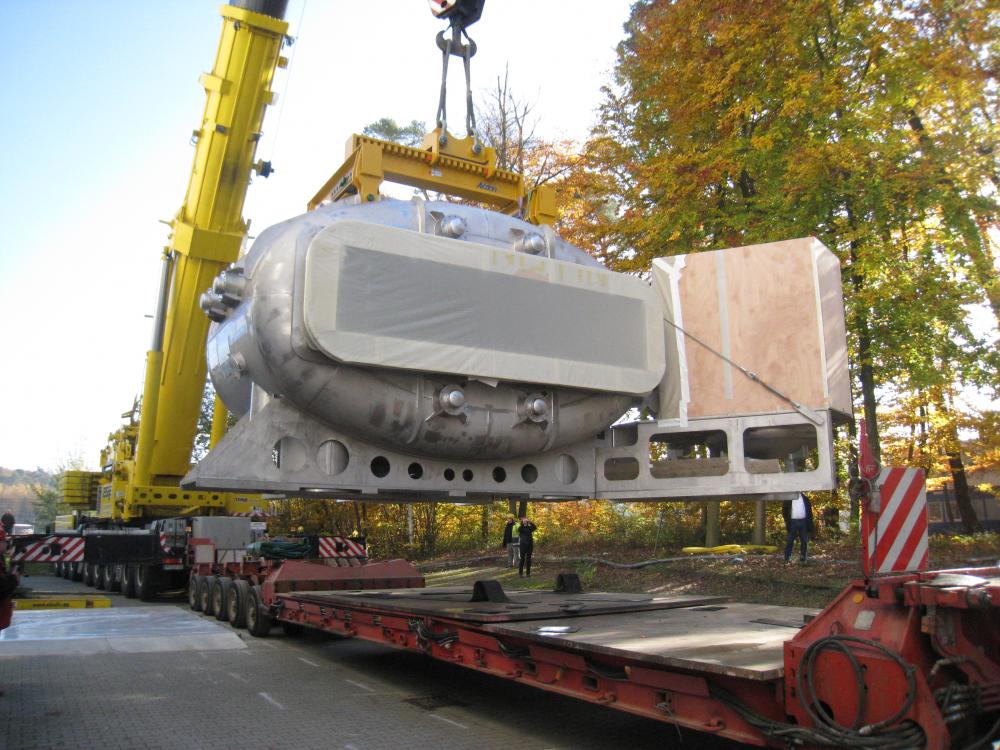The European Reactions with Relativistic Radioactive Beams of Exotic Nuclei (R3B) collaboration brings together 230 physicists from 63 institutes in 21 countries. The group has set up a study at GSI in Darmstadt, Germany to investigate the emerging physics of exotic nuclei with relativistic energies. This program requires the construction of a number of high performance experimental installations in the fields of inverse kinematic reactions, total detection of the reaction products, and momentum resolution. The GSI Large Acceptance Dipole (GLAD), a superconducting spectrometer, will be an essential component of the R3B detector assembly. The preliminary design for the project was carried out as part of the 5th European research and development framework program (FP5). The decision to fund the construction of the GLAD magnet was taken in October 2005 as part of FP6.
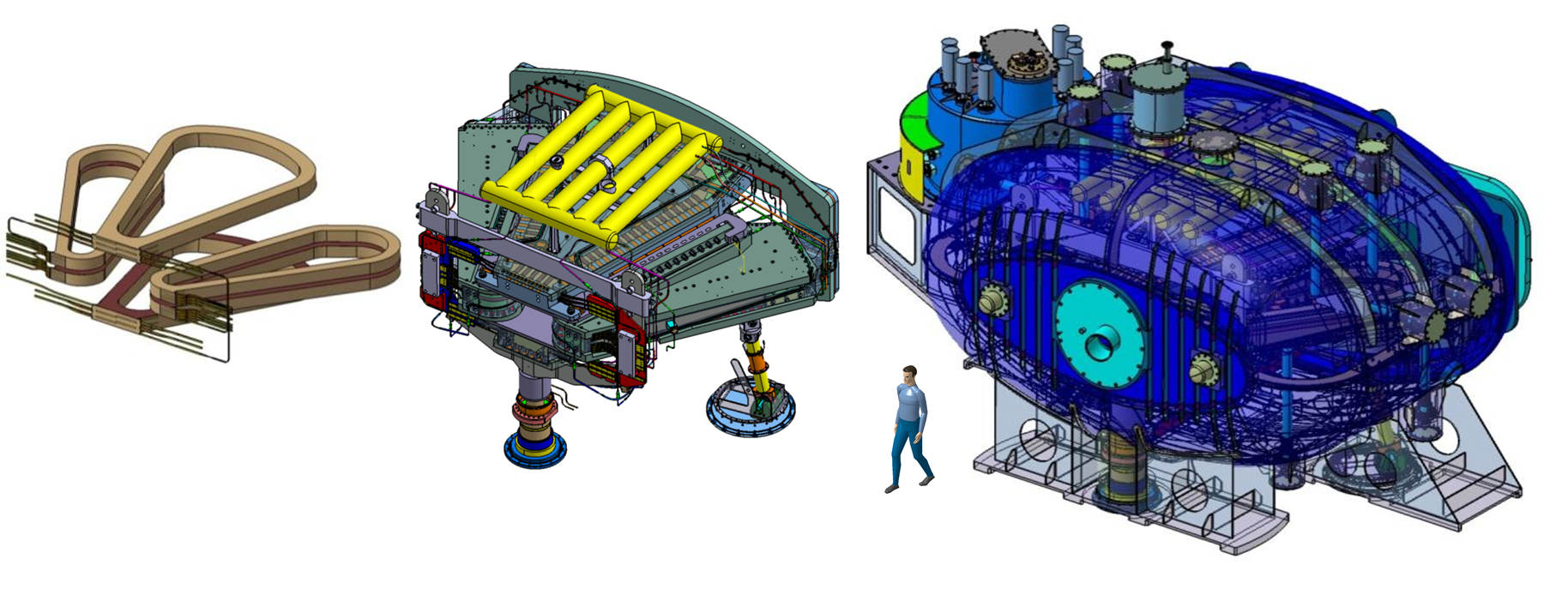
Left: The magnetic structure consisting of six trapezoidal coils. Center: The cold mass of the magnet consisting of the four coil enclosures, connecting plates and cryogenic supports. The electrical junction boxes connecting the superconducting cables are seen here against a blue background. In yellow: The 460 liter tank supplying the 4.5 K indirect cooling tubes in the convection circuit. Right: The cryostat next to its cryogenic satellite providing the external connections. It moves on an air cushion. The total mass of the magnet is 55 tonnes.
SPECTROMETER SPECIFICATIONS
The GLAD dipole must take the following specifications into account when analyzing the particles from reactions between the radioactive ion beam and the secondary target:
? A field integral of 4.8 T.m, making it possible to deflect high magnetic rigidity heavy ions by 18° (typically 15 T.m for 132Sn50+), and protons by up to 50°.
? A wide angle opening of ± 80 milliradians in both the horizontal and vertical axes, which also ensures transparency to neutrons that are not deflected by the magnetic field.
? A large momentum acceptance, making it possible to detect protons and heavy relativistic nuclei simultaneously, at individual nucleon energies of approximately 1 GeV.
? A negligible leakage field (< 20 mT), especially around the target zone located one meter upstream from the magnet entry face.
? A momentum resolution of 10-3 and an angular resolution of 1 milliradian reconstructed at the target.
COIL PERFORMANCE VALIDATION
After the cryogenic tests carried out on the cold mass in 2012, the thermalization of the cold mass fixed foot was modified. New tests enabled the 3584 A nominal current to be achieved in December 2013. However, the gradual rise of the current to a maximum speed of 2 A/s was interrupted abruptly five times by resistive coil transitions ("quenches"). These transitions, occurring at increasingly high currents, correspond to a phase during which the coils were being repositioned in their aluminum alloy casing. This gradual positioning of conductors due to intense mechanical loading occurs little by little each time the current rises ("training"), until the nominal current is reached. Once this current has been achieved, it can be reduced to zero and then returned to its nominal value without difficulty. A full cryogenic cycle can, however, reset the process.
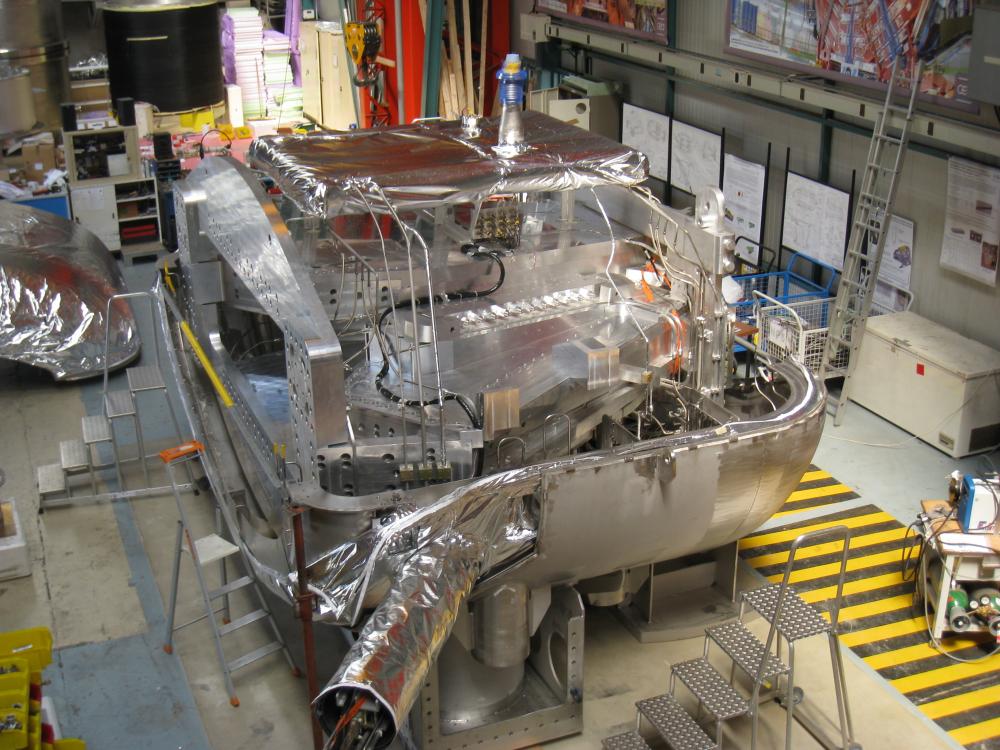
: Cold mass in the lower half of the cryostat. The upper part, wrapped in superinsulation, is the 460 liter helium tank supplying the thermosiphon.
INTEGRATION OF THE COLD MASS INTO THE CRYOSTAT
Following these successful tests, the cold mass was installed into its final cryostat. First, it was equipped with its definitive busbar. The next step consisted in assembling various industrially produced parts, one inside the other like "Russian dolls". These parts included the thermal shield from Zanon (Italy), the superinsulation from Jehier (France) and the vacuum chamber from SDMS (France). Lastly, the magnet was completed with the production of its cryogenic satellite, which comprises current leads, cryogenic valves and the whole instrumentation cable routing system. A series of tests (tightness, electrical insulation, positioning, and instrumentation control) were carried out throughout the integration process.
In October 2015, the 55-tonne magnet, along with its control and safety racks, was transferred to the GSI site, where it will be installed in Cave C and then connected to its power supply and refrigerator. The magnet is scheduled to begin operating at the end of 2016.
• superconducting magnet physics and technology › Superconducting Magnets for Particle Physics Research



